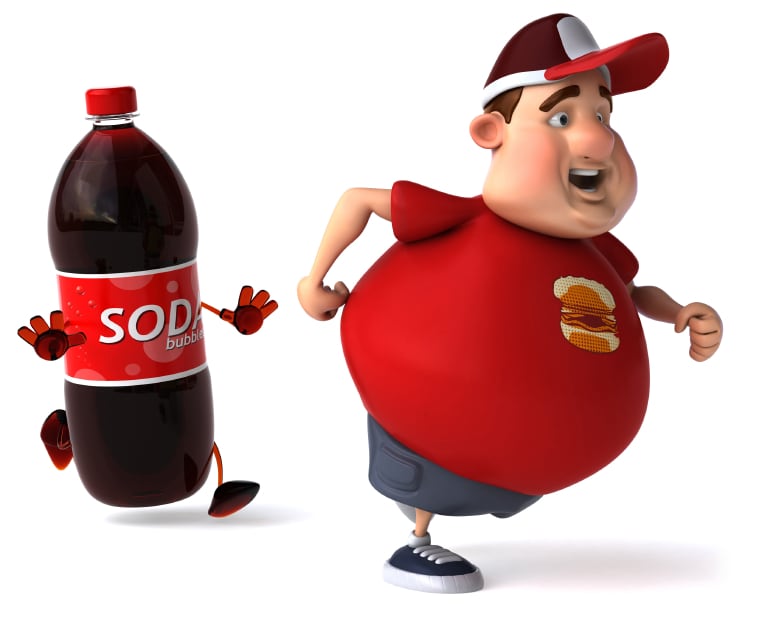In a 20-page opinion, Judge Eugene F. Pigott Jr. of the State Court of Appeals wrote that the city’s health department overstepped its bounds when it restricted the size of sodas.
The court is siding with a lower court that overturned the 2012 rule. Proposed by then-mayor Michael Bloomberg, the rule would have limited the sale of sodas in restaurants, delis, movie theaters, stadiums and street carts to 16 ounces. Pushed as a way to fight obesity and other health conditions, the cap was struck down by the lower court following lawsuits from trade groups representing companies such as Coca-Cola Co.
“What it was really about was making the default choice the healthy choice and creating an environment so all these public health initiatives and talk about changing food labels could be put into practice,” Lisa Young, RD, PhD, adjunct professor at New York University, who testified at one of the hearings, told FoodNavigator-USA. “Looking at the World Health Organization and American Heart Association’s recommendations for how much sugar to consume, human beings can’t do that when they live in a society where portions are so big such that even the smallest portion is too big. That’s really the unfortunate piece in all this. All these guidelines set forth by the government can’t have any impact unless the environment we’re in encourages them.”
Soda industry: ‘We have real skin in the game’
The decision is a huge win for the US soft drink industry, which strongly opposed the proposal from the outset for limiting consumer choice and unfairly singling out soda. The American Beverage Association (ABA) said in a statement that it was “pleased” to see the lower courts’ decisions upheld. “It would have created an uneven playing field for thousands of small businesses in the city and limited New Yorkers’ freedom of choice,” the trade group said.
Chris Gindlesperger, ABA’s senior director of public affairs, told FoodNavigator-USA earlier this month that the beverage industry is already doing its part through voluntary efforts like front-of-container labeling, calorie disclosures on vending machines and removing full-calorie soft drinks from schools.
“We are not only putting labels on products, but we’re running major ad campaigns to draw attention to the label. We’ve partnered with nationally recognizable thought leaders like Michelle Obama to help us spread the word. We have real skin in the game; our industry has real skin in game,” he said.
Although soda consumption is on the decline in the US, obesity rates continue to rise—and with that incidence of related chronic diseases such as heart disease and diabetes. City health commissioner Mary Bassett, who was a vocal supporter of Bloomberg’s cap, maintains that sugary drink consumption continues to play a significant role the obesity epidemic—and the companies that market such products are largely to blame. “We will continue to look for ways to stem the twin epidemics of obesity and type 2 diabetes by seeking to limit the pernicious effects of aggressive and predatory marketing of sugary drinks and unhealthy foods,” she said in a statement.
The Center for Science in the Public Interest echoed this sentiment, blaming soda and sugary drinks for promoting chronic disease and other health problems. “Curbing the size of sodas to 16 ounces is a sensible public health measure that New York City’s health department was courageous to propose,” said Jim O’Hara, CSPI’s health promotion policy director, in a statement. “Soda and other sugar drinks promote diabetes, heart disease, obesity and other health problems, and reducing consumption of these nutritionally worthless products must be a top priority for New York City and health departments around the country. It’s disappointing that the Court of Appeals saw things differently. But we hope boards of health, city councils, state legislatures, and even Congress will consider taxes, warning labels, and other policies aimed at reducing soda-related diseases.”
Currently moving through the California legislature is a proposal to place warning labels on sugary beverages. The measure recently cleared the state Senate and will now head to the Assembly for consideration. But similar state- and city-based efforts have been overturned (see here and here).

Should soda be singled out? Or is it our love affair with all things big?
Gindlesperger says that the beverage industry agrees that obesity is a serious and complex issue, and singling out soft drinks in any fashion is not the way to go about it.
“Obesity is caused by an imbalance in calories you consume and those burned off by physical activity. The only way to make a real impact on this issue is through comprehensive approaches. Our industry is leading the way with labeling and removing full-calorie soft drinks from schools and supporting parents and consumers to make choices that are right for them.”
Dr. Young noted that voluntary efforts are likely going to be the drivers of change, given the failure of mandated efforts like the cap and the soda tax before it. Where she’d like to see beverage companies step up is recalibrating what’s considered small, medium and large.
“It was the first attempt to really start regulating Big Food in a sense—not the label, not posting calories, but it was really about what they can sell. I think it was an excellent effort on the part of the public health department," she said. "Unfortunately the word ‘soda ban’ caught on in the media, and I think the American Beverage Association doesn’t want to be told what to sell because it will affect sales.
"From a consumer perspective, this was not about banning soda," she said. "This was about how much is reasonable for one person. are a lot of factors that contribute to obesity. One very major one is fact that what used to be a normal size is now called ‘mini’. People don’t want mini; it’s for kids and dieters. ABA can talk about all they want about selling 7.5-ounce servings. I want to see them sell those individually, charge less and get rid of big sizes!”
